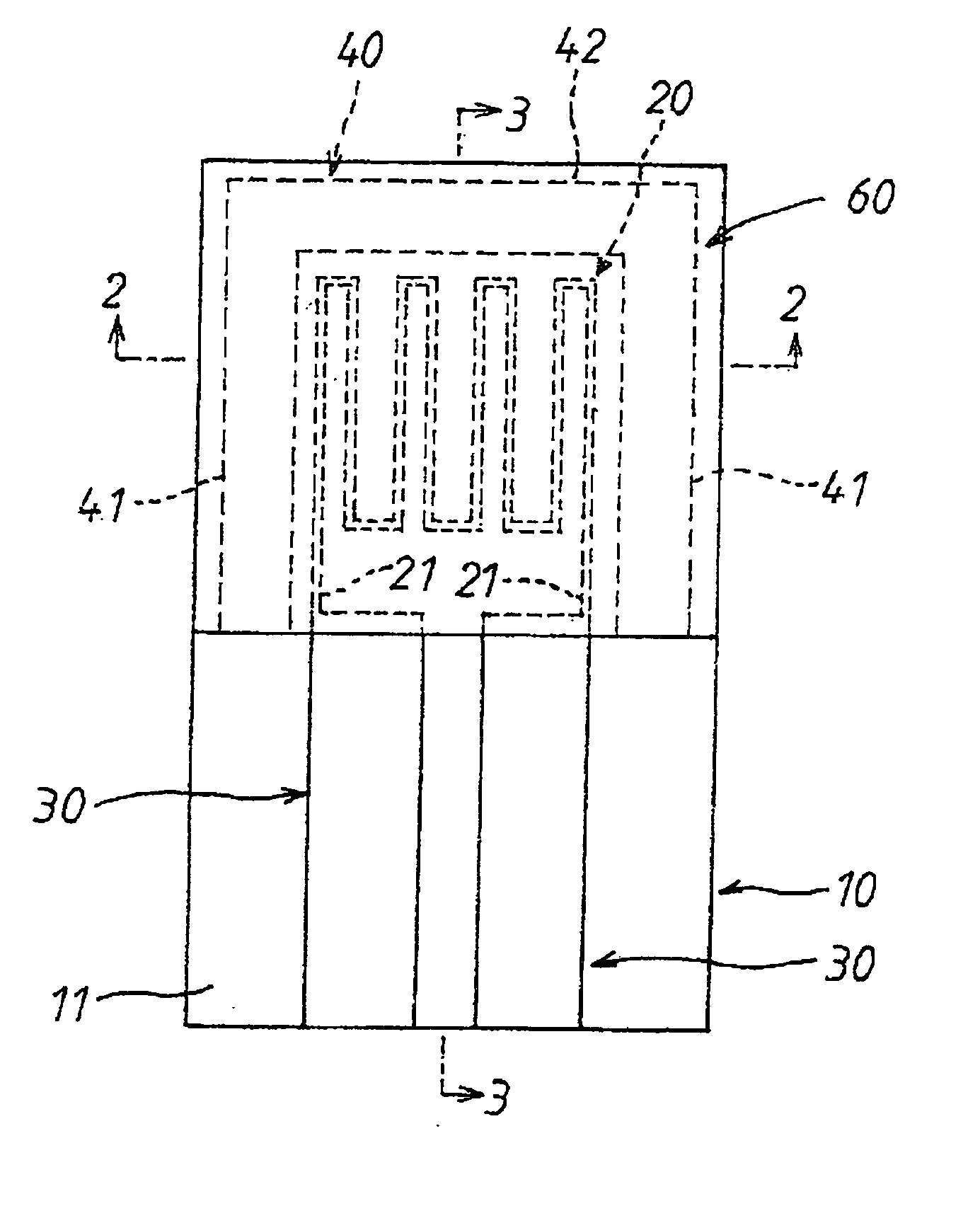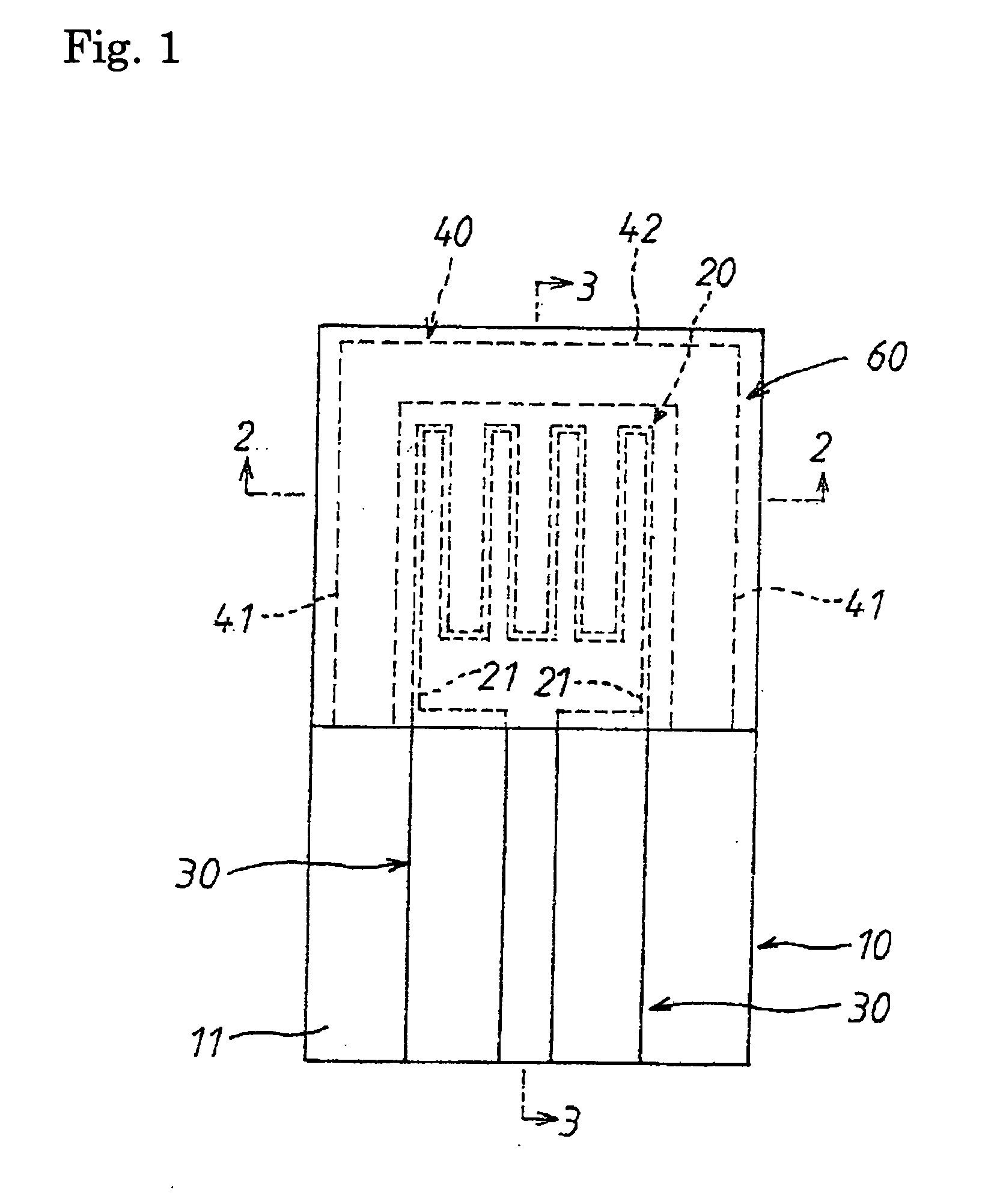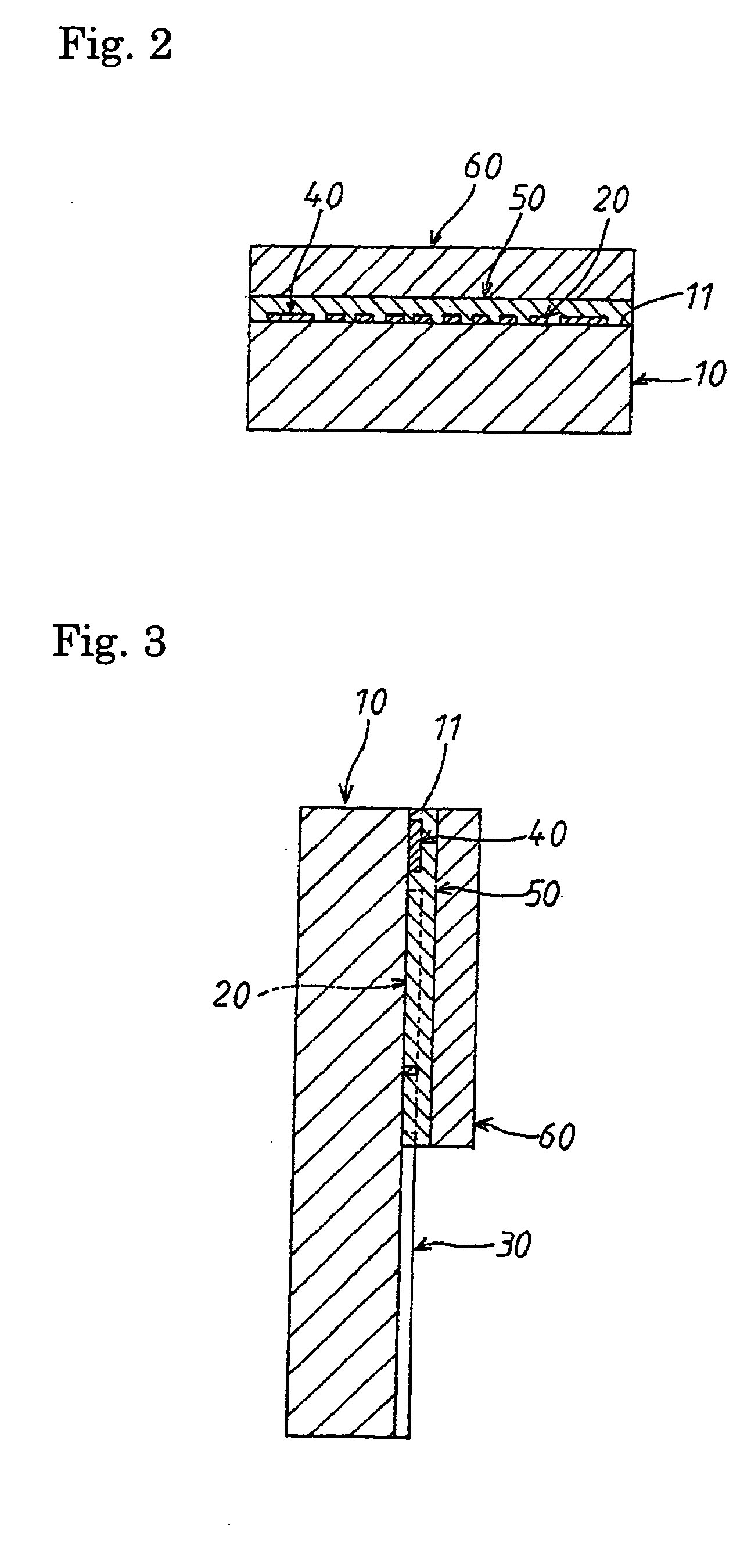Platinum resistor temperature sensor
a technology of resistor and temperature sensor, which is applied in the direction of positive temperature coefficient thermistors, instruments, heat measurement, etc., can solve the problems of increasing the resistance value of platinum resistor and losing the resistance, and achieve the effect of further enhancing the invention according to one of the first to fifth aspects
- Summary
- Abstract
- Description
- Claims
- Application Information
AI Technical Summary
Benefits of technology
Problems solved by technology
Method used
Image
Examples
first embodiment
[0100] FIGS. 1 to 3 show a first embodiment of a platinum resistor temperature sensor according to the present invention. The temperature sensor comprises a substrate 10. The substrate 10 is formed of a material comprising alumina (Al2O3) of high purity in such a manner that it has a dense structure. Further, in the present first embodiment, as the material (hereinafter, referred to also as “high-purity alumina material) containing the above-described alumina of high purity, a material containing 99.9 (%) or more of alumina is employed. Still further, the substrate 10 also performs the role of a support plate of the temperature sensor.
[0101] Still further, the temperature sensor comprises a platinum resistor 20, both leads 30 and an evaporation suppressing layer 40 in a strip shape. The platinum resistor 20 is formed, as shown in FIGS. 1 and 3, on a center portion of an upper-side portion shown in the figure (hereinafter, referred to also as “platinum resistor-side portion”) on a s...
second embodiment
[0139] FIGS. 12 to 18 show a second embodiment of the temperature sensor according to the present invention. The second embodiment has a constitution in which, as shown in FIGS. 12 to 14, left-side and right-side both leads 90 and 100 are adopted in place of the left-side and right-side both leads 30 and the evaporation suppressing layer 40 in the first embodiment.
[0140] The left-side and right-side both leads 90 and 100 are, as shown in FIG. 12, formed by using platinum (Pt) on the surface 11 of the substrate 10 in a manner such that it has a constitution having left-right symmetry as shown in the figure, taking the center in a left-right direction shown in the figure of the surface 11 of the substrate 10 as a reference.
[0141] A left-side lead 90 comprises a lead portion 91 in a shape of a square deprived of one side and this lead portion 91 is formed on a left-side portion of an upper-side portion (the platinum resistor-side portion) shown in FIG. 12 on the surface 11 of the sub...
third embodiment
[0162]FIGS. 19 and 20 show a third embodiment of a platinum resistor temperature sensor according to the present invention. The third embodiment has a constitution in which an evaporation-suppressing layer 150 is adopted in place of the evaporation-suppressing layer 40 (see FIG. 2) in the platinum resistor temperature sensor as described in the first embodiment.
[0163] The evaporation-suppressing layer 150 is, as shown in FIGS. 19 and 20, wherein reference numerals not expressly mentioned below designate the same parts of the invention as described above with respect to FIGS. 1 to 18, inserted between the adhesive layer 50 and the covering lid layer 60. On this occasion, the evaporation-suppressing layer 150 is formed in a laminate state by the same material as the evaporation-suppressing layer 40 over the entire surface of the adhesive layer 50. Further, the covering lid layer 60 is provided in a laminate state over the entire surface of the evaporation-suppressing layer 150. Other...
PUM
| Property | Measurement | Unit |
|---|---|---|
| temperature | aaaaa | aaaaa |
| thickness | aaaaa | aaaaa |
| temperature | aaaaa | aaaaa |
Abstract
Description
Claims
Application Information
 Login to View More
Login to View More - R&D
- Intellectual Property
- Life Sciences
- Materials
- Tech Scout
- Unparalleled Data Quality
- Higher Quality Content
- 60% Fewer Hallucinations
Browse by: Latest US Patents, China's latest patents, Technical Efficacy Thesaurus, Application Domain, Technology Topic, Popular Technical Reports.
© 2025 PatSnap. All rights reserved.Legal|Privacy policy|Modern Slavery Act Transparency Statement|Sitemap|About US| Contact US: help@patsnap.com



